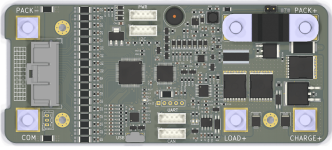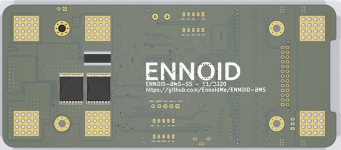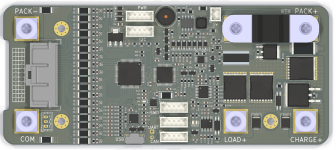Bill of material alone is a bit more than 100USD when counting with 100 Units. BOM goes down to approx. 90 USD with more than 1000 units. I don't think I can include the development cost + cost of manufacturing + small profits without staying at approx 200-250USD for now...
My goal isn't to beat the chinese BMS on cost at all with this e-bike oriented version...it is to offer something different with better specs/features. Something open source that you can trust and rely on. VESC has a similar approach too..
My goal isn't to beat the chinese BMS on cost at all with this e-bike oriented version...it is to offer something different with better specs/features. Something open source that you can trust and rely on. VESC has a similar approach too..






